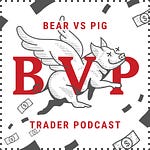If you’re new, subscribe for free! 👇 And listen to the intro post here. - Del
I'm a bit of a stickler when it comes to volume, maybe because it's at the center of my trading strategy. I often see people on Twitter refer to volume profile as a moving average or a plug n’ play strategy.
“I like your volume profile, bro” or “So happy I added volume profile.”
Let me help with a rant.
Volume analysis is the study of the lifeblood of the market auction. The objective is to understand what’s beneath the surface to make sense of what’s going on above.
To put it another way, price is an indicator of volume. Let that sink in. When you trade, are you trading price? Or are you really trading volume?
As traders, it’s imperative that we fully grasp the concept of volume and how it changes hands. You need to be at least aware of the methods used to analyze volume, as they could benefit your trading.
Volume tools
Volume Profile on its own is useless without the holistic analysis that goes along with it. It would be like learning to steer but not knowing how to push the pedal. Here are some of the more common tools available on most charting platforms.
Volume at Time (A histogram along the x-axis)
Volume at Price (A histogram along the y-axis, aka. “Volume Profile”)
VWAP (Volume weighted average price)
Bid/Ask Delta (Difference in volume between buyers are sellers)
Together, these indicators can help you get a picture of sentiment and how volume is distributed at different price points on the chart.
Volume at play
Ok, so why do you care to understand volume? Can’t you just trade price action? Yes! But if you use charts to make trading decisions (technical analysis), you may have noticed that stocks with large ranges or successful breakouts all have high relative volume.
Intraday, you may have also noticed that volume falls off from morning peaks, which is usually when you’ll have the strongest defining moves for the session.
Lastly, and most importantly, new traders can use volume profile to pinpoint conflict areas on the chart with much more accuracy than the traditional method of Support and Resistance—something I’ll do a separate post on.
In another post, I’ll do a deep dive on how to interpret and apply “Volume Profile (Volume at Price)” analysis to your trading.
These tools are all part of a larger analysis that can be very powerful in selecting conflict areas on a chart, but there’s more to this type of analysis than meets the eye.
The exciting part to me when I spent time learning about volume was a shift in how I thought about price action. When doing technical analysis, it’s less about what works and more about looking for commitment.
If price reflects the underlying volume, what characteristics of the volume activity would be most telling about the emotional or behavioral state of market participants? Do we even have the full picture?
The fourth dimension
You’ve been staring at fixed periods your whole life, Neo; there is another dimension. Spoiler… it’s important.
We look at price, time, and volume on a chart every day, but there is another axis. Velocity. This fourth dimension is overlooked on most charting platforms for stock traders. Don’t you think how much time price spent at each price level could be important?
Time Price Opportunity(TPO)
If you’re looking at charts with timeframes, you’re simply seeing price split arbitrarily by time periods. That split has nothing to do with the way price actually behaves. It serves no other purpose than to simplify data for us, which is fine.
What we’re missing is the ability to see how much time was spent at one price level vs. another. Sure, we could have sideways movement in a stock that tells us it’s spending a lot of time there. But a lot of volume may be deposited at a price point where price spent the least amount of time. That is arguably important information.
This is where TPO charts come in. Time Price Opportunity — commonly used in futures trading. In stock trading, I haven’t found the same popularity. Here’s an example of my use of TPO charts mixed with Volume Profile which played a big part in a decision to short NFLX.



TPO charts build a profile sequentially based on how much time is spent at each price level, commonly using the alphabet. They build from open to close and represent where price has spent the most or least time during a session.
I can do a deeper dive into using TPO charts in the future. I’ll also make future posts about the concept of velocity in day trading, and how I use it to complete the story.
In Closing
Here are a couple of platforms and addons that I can recommend.
Sierra Chart (My current platform)
Rancho Dinero (NinjaTrader add-on)
When you look at a price chart, realize that there is a volume distribution inside each time period. Imagine a tiny profile, very much fractal in nature.
For traders, the personality of each stock is different, and the best way to get to know them is through analyzing their volume.
📣 I put together a 5+ hour course that shows how I used these methods to day trade small-cap stocks. Check it out at delthetrader.com.
If you liked this issue and want to hear more about a specific topic. Let me know in the comments below.
— Del (twitter)

















